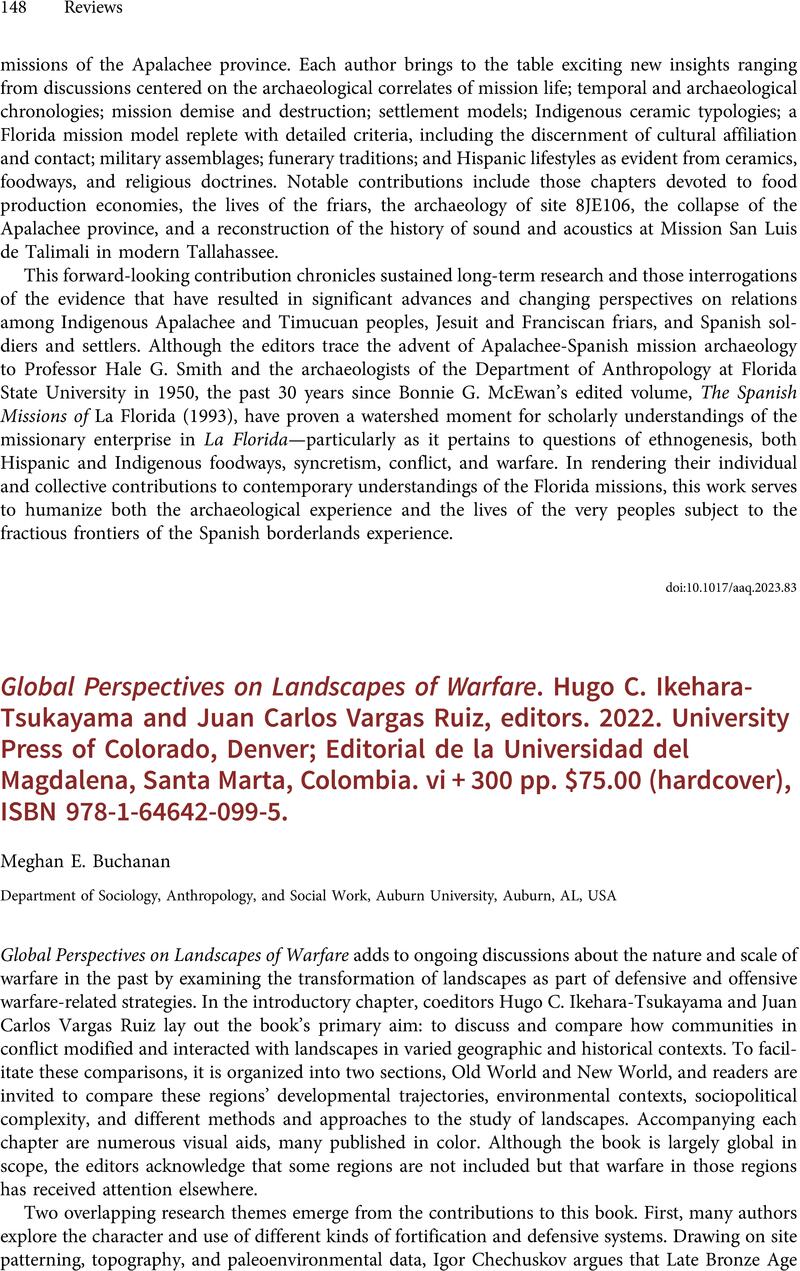No CrossRef data available.
Article contents
Global Perspectives on Landscapes of Warfare. Hugo C. Ikehara-Tsukayama and Juan Carlos Vargas Ruiz, editors. 2022. University Press of Colorado, Denver; Editorial de la Universidad del Magdalena, Santa Marta, Colombia. vi + 300 pp. $75.00 (hardcover), ISBN 978-1-64642-099-5.
Review products
Global Perspectives on Landscapes of Warfare. Hugo C. Ikehara-Tsukayama and Juan Carlos Vargas Ruiz, editors. 2022. University Press of Colorado, Denver; Editorial de la Universidad del Magdalena, Santa Marta, Colombia. vi + 300 pp. $75.00 (hardcover), ISBN 978-1-64642-099-5.
Published online by Cambridge University Press: 03 November 2023
Abstract
An abstract is not available for this content so a preview has been provided. Please use the Get access link above for information on how to access this content.

- Type
- Review
- Information
- Copyright
- Copyright © The Author(s), 2023. Published by Cambridge University Press on behalf of the Society for American Archaeology


